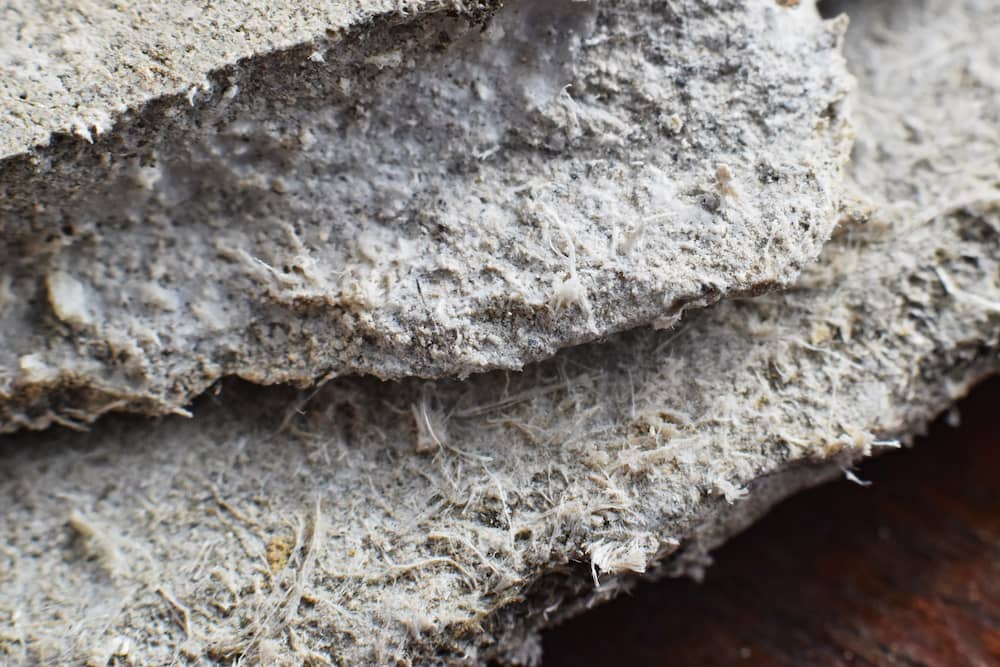
Asbestos
Asbestos is a natural mineral which was widely used in construction and industries during the second half of the twentieth century.
Exposure to asbestos is very dangerous. Since 2002 it is prohibited to mine it and to use it in any production process.
Despite it, many people may be exposed to asbestos today because there are asbestos containing materials installed in many places: buildings, industrial facilities, ships... And therefore, workers (maintenance, dismantling, demolitions, etc.) or visitors can be exposed to asbestos nowadays.
WHAT IS ASBESTOS?
Asbestos is a naturally occurring group of minerals (mostly silicates) composed of fibers.
El término equivalente a amianto en la terminología anglosajona es asbestos. A veces se encuentra la denominación asbestos para referirse al amianto en documentos en lengua castellana. Ambos términos deben entenderse como sinónimos.
Six types of asbestos are legally recognized and divided in two categories (amphibole and serpentine). Most used to manufacture asbestos containing materials are the following asbestos types.
• Chrysotile or white asbestos
• Amosite or brown asbestos
• Crocidolite blue asbestos
Other types (anthophyllite, tremolite and actinolite) may be found in large deposits or as contaminates in other minerals such as talc and vermiculite.
Crocidolite and amosite belong to amphibole category, with straight and jagged shape fibers, and chrysotile to serpentine category, characterized by curly fibers.
Asbestos is extremely resistant to heat, electricity and corrosion. As it is composed by fibers, asbestos can be used to reinforce cement and plastics, and weaved for cloths.
HOW DO ASBESTOS FIBERS BEHAVE?
Asbestos-containing materials can release fibers.
Released asbestos fibers are spontaneously divided longitudinally in a progressive and practically uninterrupted way. Finest asbestos fibers are just visible under the electron microscope.
Released fibers can stay suspended in air for a long time and after that fall on any surface. Air currents, can favor the release of asbestos fiber and its suspension is air, increasing its concentration in the environment.
Finest fibers may reach the alveoli and deposit there, and there is no known way to reverse the damage it causes.
WHAT EFFECTS DOES IT HAVE ON HEALTH?
Breathe asbestos fibers can cause incurable diseases.
No amount of asbestos exposure is safe, but asbestos generally has the worst effects when a person is exposed to an intense concentration of it, or they are exposed on a regular basis over a long period of time.
Asbestos can be accumulated in the body at any exposure, and there is no known way to reverse the damage it causes.
Scientific studies show exposure to asbestos is linked to several diseases, including lung cancer and mesothelioma, which is a type of cancer almost exclusively caused by asbestos exposure. The mineral also causes asbestosis and other diseases.
Asbestos-related diseases have a long latency period, often taking decades to develop. It is usual to trace back the occupational exposure at workplaces of patients with asbestos-related diseases.
WHERE IS ASBESTOS RISK?
The risk situations are those in which released asbestos fibers may be suspended in air.
Even though asbestos is prohibited in any production process, risk situations exist nowadays where asbestos is installed. Asbestos containing materials are installed in many places (buildings, industrial facilities, ships etc), so that workers (maintenance, dismantling, demolitions, etc.) or visitors can be exposed to it, and often without knowing it.
Obviously during the asbestos removal works, workers are exposed to asbestos fibs, so that the correct use of protective equipment become crucial.
WHO CAN BE EXPOSED TO ASBESTOS?
People in places where asbestos containing materials exist can be exposed, but the risk increases enormously when the asbestos containing materials are handled, for example, by workers who participate in:
- Maintenance works
- Removal of asbestos materials
- Demolition of buildings where asbestos materials are installed.
WHICH BUILDINGS CONTAIN ASBESTOS?
The buildings, facilities, etc. where asbestos containing materials are most likely to exist are those built, rebuilt or refurbished between 1950 and 1989, because at that time asbestos was most used to manufacture other materials.
WHERE IS ASBESTOS IN A BUILDING?
Asbestos has been used profusely in production processes where many different asbestos containing materials resulted. It is not possible to recognize asbestos just with the naked eye.
Asbestos was widely used as an effective insulator, and it was added to cloth, paper, cement, plastic and other materials to make them insulator and stronger materials.
Obviously, these materials had a very different appearance depending on the materials which asbestos was mixed with (plastics, plasters, resins, cement ...).
Locate the asbestos-containing materials in a building requires the survey of qualified inspectors, and the sample and analysis of suspected materials to determine or not the presence of asbestos in them.
Places of a building where asbestos containing materials can be found are:
- Steel or concrete structures, walls and roofs for fire protection (asbestos spraying).
- Thermal insulation of pipes, boilers, pressure vessels, calorifiers etc.
- Insulating boards used in partitions, fire doors, roof panels, etc.
- Asbestos-cement products.
- Electrical or heat insulation of electrical equipment. Also used in some air-conditioning systems as insulation and acoustic lining
- Putties, sealants, reinforced plastics, insulating paper in electrical equipment, vinyl floor tiles, asphalt fabrics for roofs, etc.
WHICH ASBESTOS CONTAINING MATERIALS ARE MORE DANGEROUS?
Some asbestos containing materials are more likely to release asbestos fibers than others. The risk of any material can be assessed according to different standards (HSG 264, UNE 171370, etc.)
In general, materials containing a higher percentage of asbestos can be damaged more easily, and so more fibers can be released.
Friable materials are those which break easily. Some examples are:
- Spayed asbestos
- Thermal insulation
- Textiles
- Insulation boards
- Asbestos paper and felt
Non friable materials are those in which asbestos is firmly retained, and release fibers not so easily. Some examples are:
- Asbestos cement
- Vinyl floor tiles
- Resins
- Paints